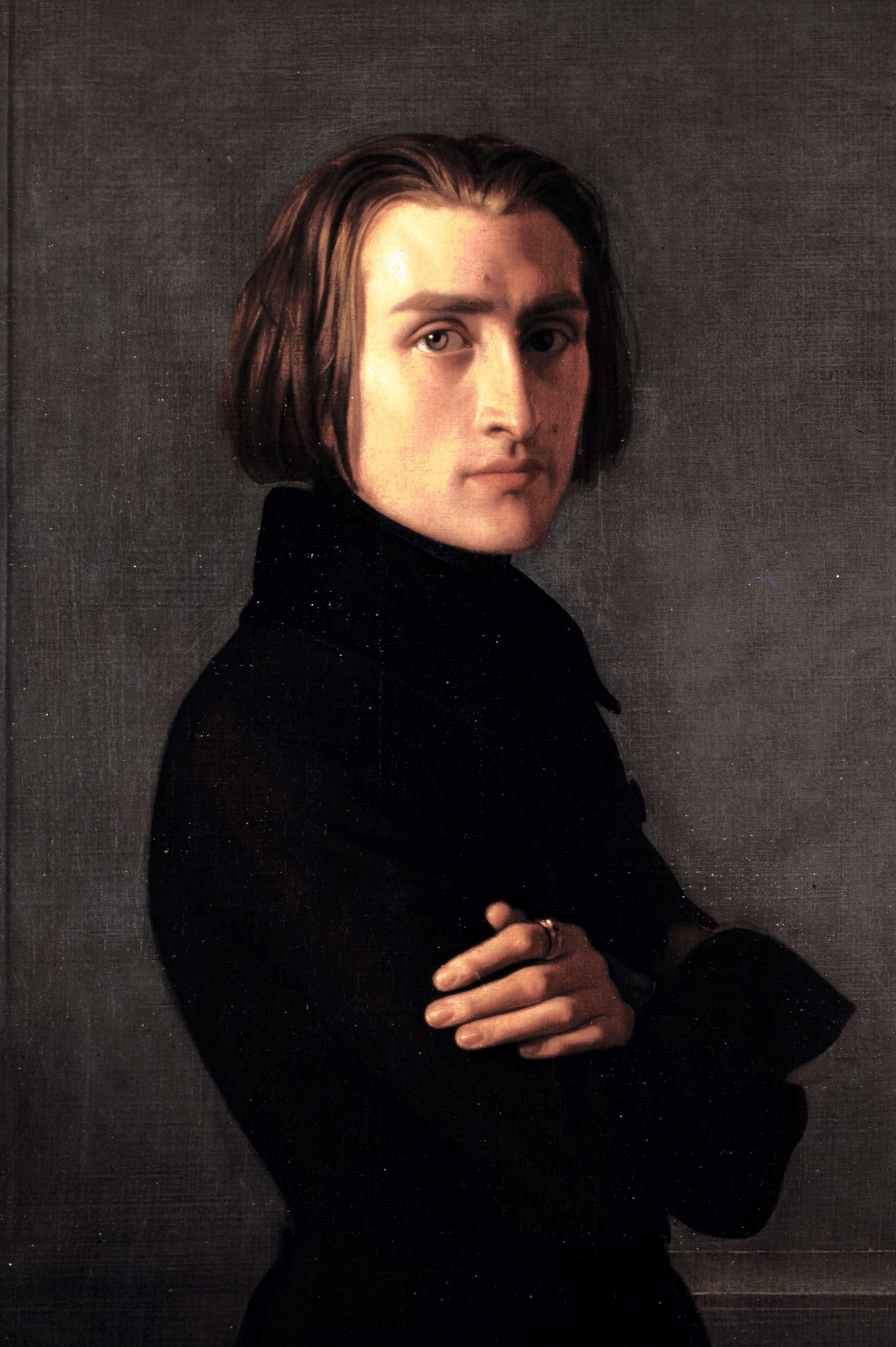October 22, 1811, Raiding, Austria − July 31, 1886, Bayreuth, Germany

On this day, the Hungarian pianist Franz Liszt, one of the most notable pianists of Romanticism, was born in the Austrian city of Raiding. His versatility and transformation from a romantic virtuoso, a scandalous lover from high Parisian society, through a Kapellmeister at the court of the Duke of Weimar, a Franciscan monk in the Vatican, all the way to a deeply religious man, attract attention and describe him as a complex man with many faces. He spent a good part of his life in Paris, where he met Frédéric Chopin, later a very close friend. This poet of the piano had a great influence on Liszt, especially when it comes to refined expressiveness and bravura on the piano. Performing concerts throughout Europe, he met many great artistic names, among whom Paganini stands out, whose behavior at concerts served as a role model for Liszt. Inspired by Chopin and Paganini, he developed a technique that could be compared to Paganini’s, but with “Chopinian colors” and poetics. When it comes to his physical appearance, he was described as a tall, fair-haired man of aristocratic demeanor, extremely handsome. So it’s no surprise that young ladies swoon when he takes the stage and starts playing. There is a recorded quote from Ignatius Moscheles, which was created when he first heard the seventeen-year-old Liszt: “As for his playing, he surpasses all pianists I have heard, in terms of strength and ease with which he solves technically difficult places.” Liszt was the first to introduce the practice of solo concert, as he jokingly called it “musical monologue”, because until then it was customary for concerts to feature several performers. With his concert in Rome in 1839, Liszt broke this practice. He also performed piano transcriptions of symphonic, operatic, and chamber works by many composers, thus bringing them closer to the listeners. However, much more important is his original work: cycles of miniatures (especially the Years of Pilgrimage, published in three volumes and created throughout his life), etudes (a collection of Transcendental Etudes), Hungarian Rhapsodies and numerous other compositions. A special place among those works belongs to the Sonata in B minor. He did not deal with the theory of piano technique, but, nevertheless, musicologists state that he used the technique of hand weight, as well as that he played with relaxed shoulders, with hands and fingers raised quite high. Liszt’s biggest rival was Sigismund Thalberg, and in 1837 Liszt rented the hall of the Paris Opera and challenged Thalberg to a “pianistic duel”. On March 26, the magazine Gazzete muziale published the program with the announcement: “Without a doubt, the greatest interest will be aroused by the simultaneous performance of two talented pianists, whose rivalry excites the music world and reminds us of the balance of power between Rome and Carthage.” Messrs Liszt and Thalberg will play alternately”. At the end of the concert, the result was: Thalberg is the best pianist in the world, and Liszt is the only one. After 1848, he worked in the service of the Weimar court, where he was strongly influenced by German musicians, especially Richard Wagner, whose sincere friend he was. As a conductor, he was a great fan of Wagner’s art and one of the best interpreters of his works. When Liszt conducted Tannhäuser, Wagner wrote: “I felt with astonishment that my other self was standing there. What I felt while composing this music, Liszt felt conducting it”. Over the years, Liszt became a mixture of genius, vanity, generosity, greed, religiosity, snobbery, literary desires and imagination. In a continuous search, torn between the need for his art, religion and worldly life, he became a priest in 1865 in Rome. Out of a possible seven, he reached the fourth degree of his priestly order, which means he did not have to celebrate mass or confess. At first he lived in the Vatican, and then moved to the Villa “d’este”, where he stayed four months a year, and spent the rest of his time in Rome, Weimar and Budapest.
Franz Liszt, CC BY-SA 2.5, via Wikimedia Commons
Author: Katarina Georgijević
Translation: Jelena Čolović
